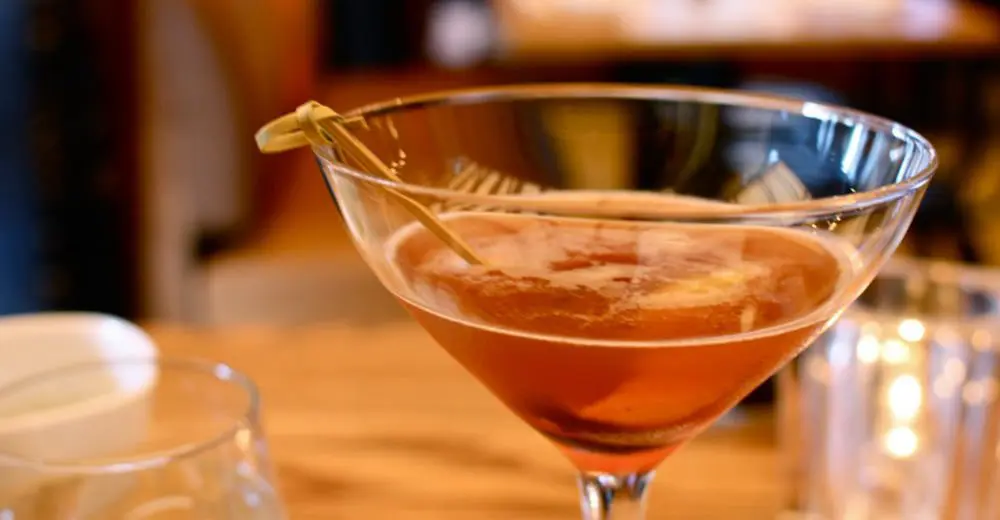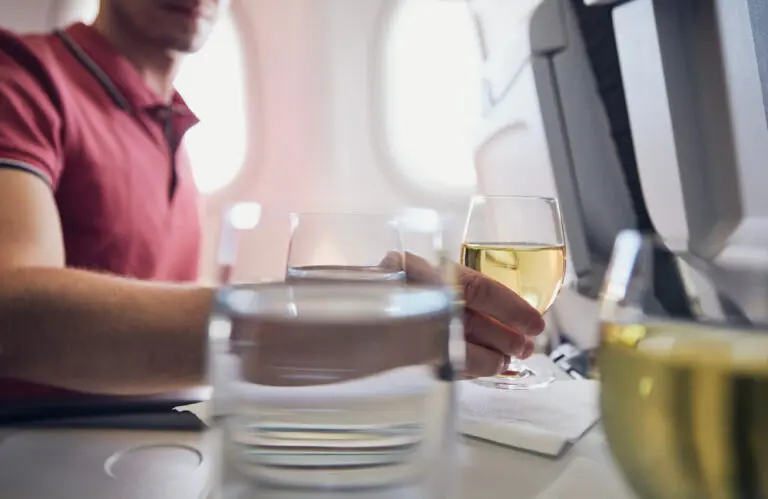It’s kodawari that makes Japanese cocktail preparation unique. That and omakase, washoku, and Ichigo-Ichiei—more about all three in a minute.
Watching top bartenders in Tokyo, I think of the Japanese tea ceremony, with its elaborate details and rules. Both reflect what Japanese call kodawari, which translates roughly to a striving for unreachable perfection achieved through relentless practice, repetition, and extreme attention to detail.
Preparing cocktails the Japanese way is a highly stylized ritual. The relationship between the bartender and the guest is like a teacher leading a student through the precise steps.
Omakase, letting the bartender decide your drinks, is part of that process. It’s a very unique, non-Western, Japanese way of seeing and doing, which is catching on in major U.S. cities, too. With the bartender recognized as the expert, the guest understands that it’s better to let him or her decide rather than asserting one’s apprentice-like opinion.
In Japan, this also means that the bartender may select indigenous products to use in drinks. This isn’t just a locavore or “farm-to-table” mindset like we see in the United States. The idea is ideological: it’s an effort to reflect a pre-Western way of seeing things. Washoku is a trend in Japan both in restaurants and bars, aiming to return to an idealized Japan before its values were ‘corrupted’ by the West.
One more term that ties it all together: Ichigo-Ichiei means ‘for this time only’—essentially, ‘here today, gone tomorrow.’ There’s an immediacy and transience to the experience created by a bartender adhering to kodawari through an omakase style of service using washoku ingredients like daikon, yuzu, and kabocha.
Having cocktails in Tokyo bars, especially fancy-pants ones high above the glorious city, is enhanced by these Japanese values. And the bartender’s personality in these bars is key to the experience.
One Ounce at a Time
Not only are the synergy of the cocktail ritual and the views of the city inspiring, but the typical short pour of cocktails in Japan means that you can enjoy the evening with several drinks without sacrificing your sobriety.
At bars that cater to foreigners, the drinks are getting bigger, but at lots of local spots, you’re likely to see pours of about one ounce. Perhaps this is for everyone’s good: no one wants to turn red while enjoying a night out, whether Japanese or European.
A Cocktail Tour of Tokyo

[Photo: Mike Magis]
My favorite high-end place in Tokyo for cocktails is New York Bar, inside Park Hyatt Tokyo, the hotel made famous in “Lost in Translation,” where fifty two-floors above the city, you have floor to ceiling windows. The drink to order is a Manhattan (about $17), made with a perfect balance of Templeton rye, Carpano Antica Vermouth, and Abbot’s bitters. There is no seating directly at the bar, but the bartenders are in view as they measure, mix, stir, and shake with extreme concentration.

[Photo: Laura Goldman]
Over at the Conrad Hotel, with its spectacular views of Tokyo harbor, high above the city on the 28th floor, you’ll find the lobby bar. What’s unique about the bar, besides its unparalleled setting, is the new cocktail program, which launched in mid-November of last year.
“Japanese cocktails are technically perfect,” Beat Ganz, the Swiss-born Food & Beverage manager told me, “but could use more creativity.” So Ganz introduced drinks like the Edible Campari: the bittersweet aperitif is given a texture of little, tiny Jujubes, served in the center of a mix of fresh grapefruit juice, vodka, and fresh mint like a red island. And the Strawberry Cheesecake? No, it’s not on the dessert menu. It’s an over-the-top drink, pure Tokyo in its drama: A little vodka, fresh strawberry puree, white chocolate liqueur, and grated parmesan. Then it’s set on fire. Maybe you have to be there.

[Photo: Laura Goldman]
The Mandarin Bar on the 37th Floor of the Mandarin Oriental is run by Yukio Kurihara. It’s tended strictly by women, and aims to feel welcoming to females traveling alone. I recommend the Sakura Martini ($18). This pink drink is made with rice shochu Torikai, cherry blossom infused sake, fresh lemon and grapefruit juices, and simple syrup. The sweet cocktail evokes cherry trees in blossom, a special season in Japan.

[Photo: Shinji Nohara]
The most unusual bar I have been to in Tokyo—or anywhere in the world—is called Gen Yamamoto, after the very young owner. It is an eight seater, no reservations, and drinks are served omakase style, with six tastes ($58) or four tastes ($42). You can also buy one drink at $18.
Gen, who worked for years in New York at Brasserie En and Brushstroke, presides solely. Shaved head, precise movements, balletic and intense. Wearing a short, white jacket, moving in absolute silence, he brings to his cocktail service a highly idiosyncratic and unforgettable series of tastes.
“My kodawari is Ichigo-Ichiei,” Gen said. He spoke of the relationship that takes place between him and each of his guests. “I am always striving to my best each time. Otherwise, we can figure it out together.”
I tasted my way through a flight of four drinks. First: ‘Niagara Grapes’ served in a long, thin glass, which was a lightly purple colored, sweet and sour cocktail made of a puree of Nagori grapes and stirred with sparking Dassai sake in an homage of sorts to a Bellini.
Next up was ‘Grand-champion Pear, a stronger, paler drink made with sweet potato shochu and a puree of Hokkaido pear puree. It was followed by the bright orange ‘Mikam and Kaki’ made with fresh persimmon puree and aged rice shochu. The sour fruit mixed playfully with the vermouth-like shochu so that each flavor changed in that blending.
Finally, the ‘Golden Ginger’, made from Kochi ginger, rosemary, thyme, cinnamon, a splash of Spanish gin, and Sichuan peppercorns. The spices and fragrant ginger suggested tropics, but the numbing on the tongue that comes from the Sichuan peppercorns was a way of closing the book on a night of drinking.
“I’m just focused on ingredients,” Gen told me, “taste, the right timing, and balance. It’s like maguro sushi: We don’t want a giant portion, we want maguro that’s in season and super delicious. I want to enjoy things that appreciate the water sources and environment where they came from.”
Get a copy of Scott Haas’s latest book ‘Back of the House’ here.







